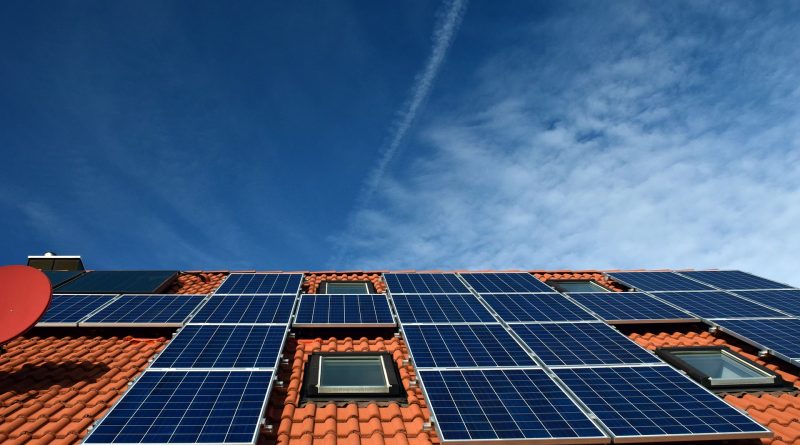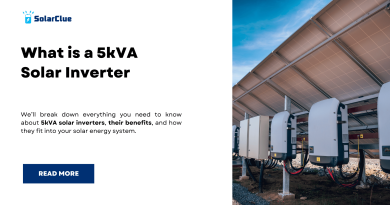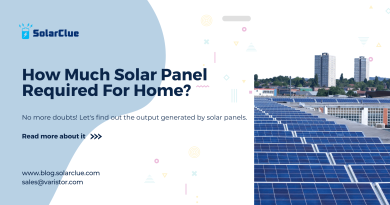On-Grid Solar Rooftop Benefits for DISCOM
On-grid solar rooftop plants have gained immense popularity in recent years as an efficient and sustainable option for generating electricity. These plants are directly connected to the power distribution network and allow individuals and businesses to produce their own electricity while still being connected to the grid. Interestingly, on-grid solar rooftop plants also offer numerous benefits to the DISCOM (Distribution Company) responsible for the distribution of electricity. In this article, we will explore how these solar plants benefit DISCOM and lead to a more sustainable and efficient energy system.
Table of Contents
On-Grid Solar Rooftop Benefits for DISCOM: Enhanced Grid Stability
Firstly the key advantages of on-grid solar rooftop plants for DISCOM is the enhanced stability they bring to the electrical grid. As more and more consumers install solar rooftop plants, the overall demand for electricity from the grid decreases. This reduced demand results in a more stable grid by preventing instances of overloading or voltage fluctuations during periods of high demand. Solar energy production during peak hours also aligns with the grid’s peak load, reducing the strain on the grid and minimizing the chances of power outages – a win-win situation for both DISCOM and consumers.
On-Grid Solar Rooftop Benefits for DISCOM: Reduced Transmission Losses
Transmission losses refer to the amount of energy wasted as heat when electricity is transmitted over long distances. These losses occur due to the resistance in power lines. On-grid solar rooftop plants have the advantage of being located close to the load centers, which significantly reduces transmission distances. With shorter transmission distances, DISCOM can minimize the electricity losses during transmission, leading to a more efficient distribution system. As a result, more electricity reaches the consumers, resulting in a higher revenue generation for DISCOM.
Revenue Generation through Net Metering
Net metering is a billing mechanism that allows individuals with on-grid solar rooftop plants to receive credits for the excess electricity they generate and feed back into the grid. This excess electricity is consumed by other consumers, effectively reducing their dependency on the grid. DISCOM benefits from net metering arrangements by being able to meet their demand without having to invest in additional generating capacity. This helps DISCOM optimize its energy resources and lowers the electricity procurement costs, translating into significant savings.
Optimized Peak Load Management
Peak load management is a critical challenge for DISCOM, especially during periods of high demand. However, on-grid solar rooftop plants can effectively contribute to peak load management. These plants produce electricity during the day, when demand is generally high, particularly in industrial and commercial areas. By generating electricity closer to the consumers, the strain on the grid during peak hours is reduced, allowing DISCOM to manage peak loads more efficiently. Consequently, DISCOM can avoid procuring expensive power from outside sources during peak demand periods, leading to cost savings.
Promoting Renewable Energy
The integration of on-grid solar rooftop plants into the existing energy infrastructure helps promote the generation of renewable energy. This aligns with the global push towards a cleaner and greener future. DISCOM can actively encourage the installation of these solar plants by offering incentives such as subsidies, tax benefits, and streamlined processes. As the number of solar rooftop plants increases, DISCOMs can report higher percentages of renewable energy in their overall energy mix. This positively impacts their reputation and plays a significant role in meeting renewable energy targets set by the government.
Conclusion
Elevate your energy game with SolarClue® – the key to unlocking innovation and sustainability in on-grid solar rooftop plants. Our state-of-the-art solutions enhance grid stability, reduce transmission losses, optimize peak load management, and boost revenue through net metering. As individuals and businesses embrace solar energy, SolarClue® becomes the catalyst for DISCOMs to build a resilient and eco-friendly electrical grid. Let SolarClue® be your trusted partner in paving the way towards a greener, more sustainable future for all.
Frequently Asked Questions
These installations contribute to grid stability, reduce transmission losses, and support DISCOMs in meeting renewable energy targets.
On-grid solar plants located on rooftops help generate power closer to the point of consumption, minimizing transmission losses associated with long-distance power transport.
Yes, these installations contribute to the overall renewable energy capacity, allowing DISCOMs to fulfill regulatory requirements and promote sustainable energy practices.
Yes, by diversifying the energy sources and decentralizing power generation, on-grid solar plants enhance grid reliability for DISCOMs, reducing dependency on centralized power generation.
DISCOMs may qualify for incentives and subsidies as they invest in on-grid solar rooftop plants, supporting government initiatives to promote renewable energy adoption.
While initial investments may be involved, the long-term benefits, including reduced transmission and maintenance costs, contribute to overall cost-effectiveness for DISCOMs.
Yes, these plants contribute to peak demand management by supplying additional power during high-demand periods, easing the burden on traditional power sources.
Yes, on-grid solar rooftop plants can integrate with existing infrastructure, utilizing the same grid for distribution and ensuring compatibility with DISCOM systems.
By reducing reliance on fossil fuels, these installations help DISCOMs lower their carbon footprint and contribute to environmental sustainability.
Yes, on-grid solar installations are scalable and adaptable to urban environments, allowing DISCOMs to promote renewable energy in densely populated areas.




